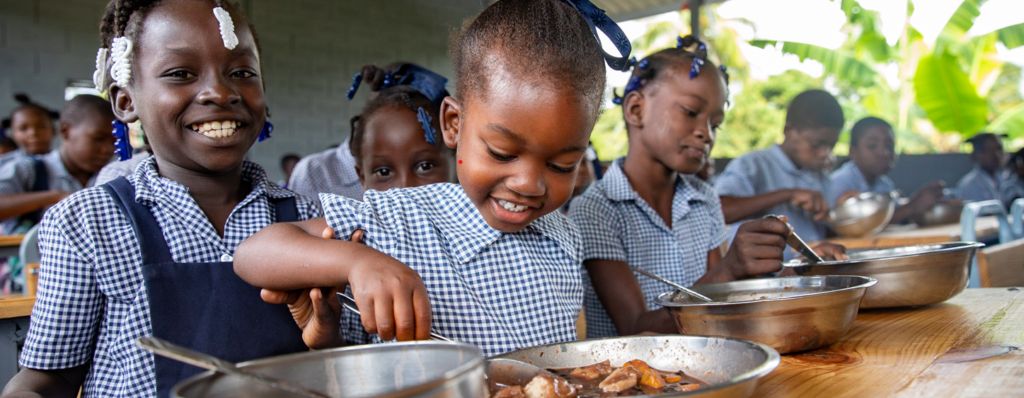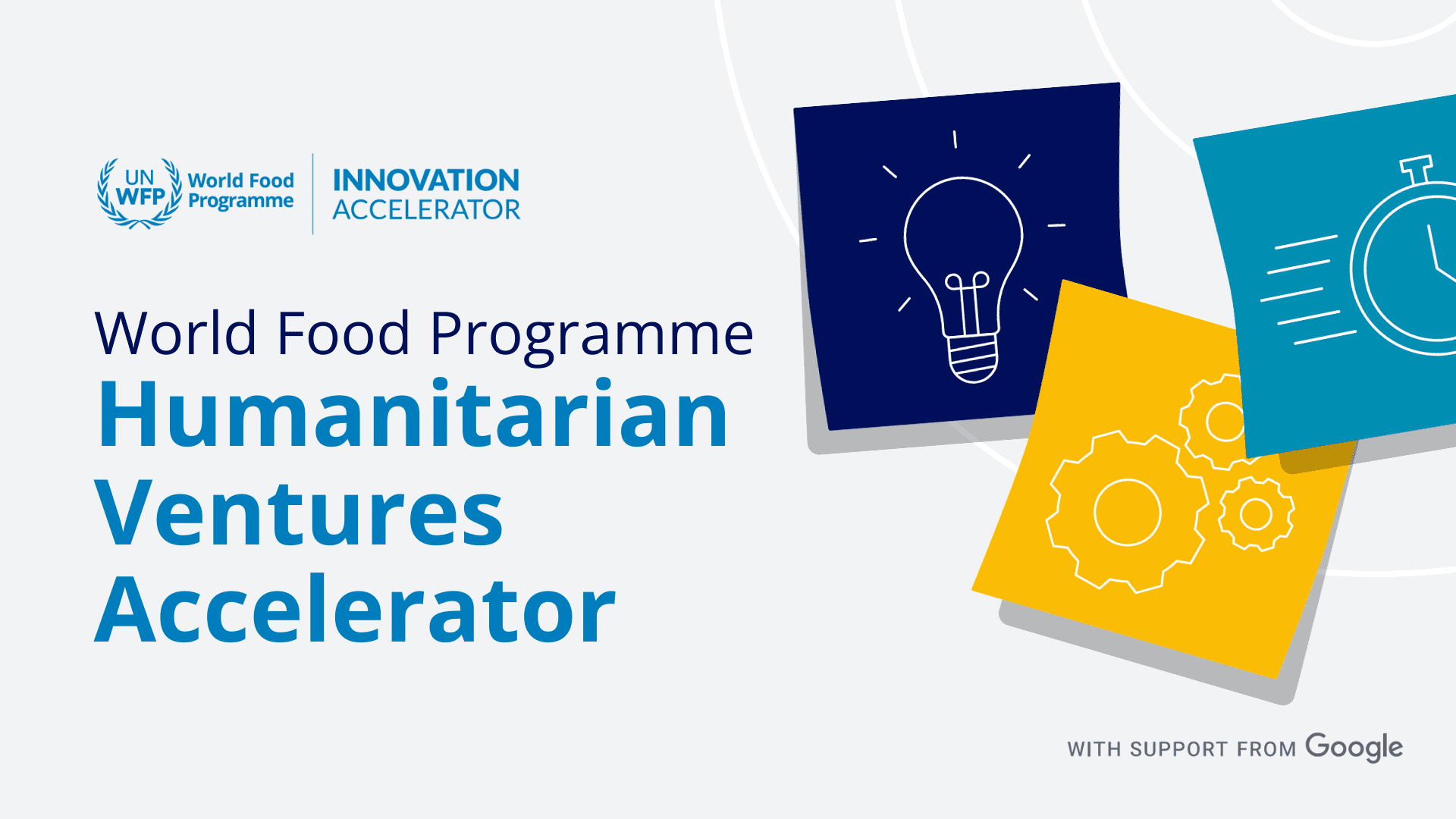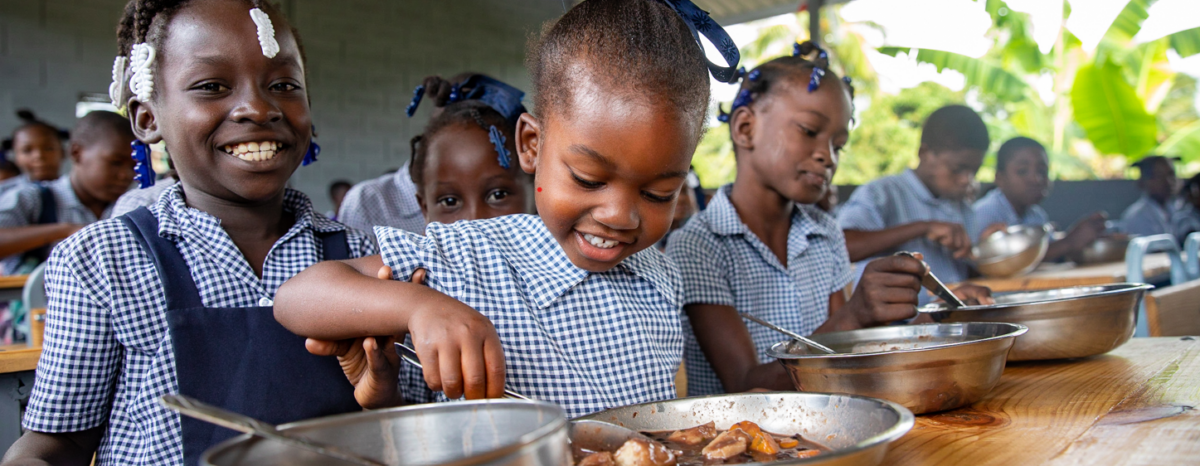Innovate to Eradicate Hunger: Unveiling 10 Tech Innovations Accelerating for Impact

Meet the 10 teams selected to take part in the new ‘World Food Programme (WFP) Humanitarian Ventures Accelerator’ program with the WFP Innovation Accelerator.
In 2024, the world continues to face unprecedented challenges. Global hunger is soaring, and the contributing factors – conflict, climate change and the rising cost of living – seem only to be increasing in frequency and severity. Overcoming these challenges will take innovation, technology, revolutionary ideas and the right partner to bring those ideas to bear. Building on a history of collaboration, Google.org has made a $2.8 million grant to World Food Program USA in support of the WFP Innovation Accelerator. With this grant, the WFP Innovation Accelerator and Google for Startups are embarking on a journey of innovation and disruption to accelerate progress towards the Sustainable Development Goals.
Google for Startups and the WFP Innovation Accelerator have co-designed an acceleration program, the World Food Programme Humanitarian Ventures Accelerator, that kicks off this month to advance and scale 10 ventures created within WFP. These innovations, which leverage Artificial Intelligence (AI), machine learning, cloud computing and data analytics technologies, focus on improving emergency response, supply chain efficiency and support for small-scale farmers.

Throughout the program, these 10 teams will work closely with WFP Innovation Accelerator consultants and Google for Startups mentors and technical success managers to progressively build their solutions and scale their impact.
1. SHAPES
Rapid and accurate data collection is essential for an effective crisis response, but often hindered by time, physical, and financial constraints. The Shock and Assistance Platform for Economic Simulations (SHAPES) addresses this by analyzing affected regions to estimate the number of people who need aid and suggest the most effective assistance methods. Accessible through a user-friendly web platform, SHAPES enables WFP Country Offices to customize scenarios involving various shocks (like extreme weather or economic inflation) and assistance strategies (like cash transfers).
2. GeoTar
Geographic targeting is the most common method to identify areas and populations in most need of assistance. Staff in WFP Country Offices are often responsible for conducting targeting, but can lack high-quality, up-to-date and detailed data. This makes geographic targeting imprecise and may exclude vulnerable communities. GeoTar is a user-friendly geospatial vulnerability profiling and targeting tool for decision-makers. By creating detailed vulnerability maps, GeoTar reduces the need for manually collected household data.
3. ETC Chatbot
In times of crisis, effective communication is vital for humanitarian organizations to understand the needs, concerns and behaviors of affected populations. However, conventional communication methods can sometimes lead to restricted insights and impede targeted assistance and emergency preparedness initiatives. The ETC Chatbot helps people affected by disasters to conveniently access up-to-date information about essential services. It also helps collect critical data and coordinate emergency responses across various U.N. agencies. So far, the ETC Chatbot has supported over 100,000 people with lifesaving information.
4. R2C2
During emergencies, telecommunications networks are often destroyed. This can make humanitarian response difficult, leading to delays in search and rescue operations and inefficiencies in the distribution of critical supplies. The Rapid Response Connectivity Carrier (R2C2) is a communications tower with an LTE (4G) transmitter drone that flies 24 hours a day, providing thousands of affected people and humanitarian responders with internet access.

R2C2 has the potential to reduce rescue times by three hours per mission and scale its operations to densely populated areas.
5. Machine Learning for Drought Seasonal Forecast and Anticipatory Action
The impacts of the climate crisis are driving small-scale farmers into hunger. This situation is exacerbated by the less-than-ideal warning systems and the limitations of the current methods for predicting seasonal weather. Machine learning for anticipatory action uses AI and machine learning to improve predictions of weather risks, which allows for faster warnings and timely assistance. So far, this solution has supported 550,000 people with anticipatory emergency cash-based transfers in Zimbabwe, Mozambique, Tanzania, Malawi and Jordan.
6. DARTS
In 2022, WFP distributed a historic $3.26 billion in cash assistance across 72 countries. However, challenges persist in ensuring all recipients receive funds. Such obstacles include limited digital infrastructure, low data literacy, and the diversity of systems used by partners. DARTs (Data Assurance and Reconciliation Tool Simplified) is a user-friendly web app that ensures cash assistance is provided accurately and precisely, promotes WFP’s accountability to its donors, assesses program efficiency and builds trust across WFP operations.
7. Prisma
Challenges such as supply chain disruptions and limited funds can make it harder for WFP to deliver aid. These difficulties are exacerbated by the intense effort required to reconcile and analyze the vast amount of data involved in supply chain planning. Prisma acts as an operations “control tower” that gives WFP teams in different countries powerful tools for:
- understanding the current operational context (descriptive analytics)
- predicting future scenarios (predictive analytics)
- and suggesting the best actions to take (prescriptive analytics).
Ultimately, Prisma enables smoother and more efficient evidence-based operational decisions.
8. Route the Meals
It can be difficult to deliver school meals to children in remote, hard-to-reach areas. Route The Meals applies mathematical models to simplify and improve the planning of delivery paths and warehouse placements. Using such models, Route The Meals aims to shorten delivery times, reduce transport costs and decrease the environmental footprint of food deliveries to ensure food reaches schools, even in far-off places, more efficiently.

So far, Route the Meal has been implemented in Haiti and Benin, serving 1.7 million children.
9. Global Upstream Planning
Given the high unpredictability of WFP operations and global supply chains, it is important for WFP to make effective decisions rapidly and assess all possible scenarios to address key questions at a global scale. These questions include where to strategically store food, when to procure food and how/when to use limited resources to reach as many people in need as possible. Global Upstream Planning (GUP) is an optimization system that helps to answer these questions by consolidating WFP’s demand, supply and network data and providing quantitative insights on key planning decisions along the entire supply chain.
10. U.N. AI Mobility
The United Nations Booking Hub, managed by WFP, is a worldwide resource for many U.N. agencies. It streamlines critical travel and lodging services, including guesthouses, U.N. aircraft, and U.N. vehicles. This tool ensures the safe movement of international humanitarian groups when on emergency missions. However, it currently has a complicated manual system. The U.N. AI Mobility team aims to double the user reach in the next two years and reduce WFP’s CO2 footprint by 10 million per year.
The WFP Innovation Accelerator sources, supports and scales high-potential solutions to end hunger worldwide. It provides WFP staff, entrepreneurs, start-ups, companies, and non-governmental organizations with access to funding, mentorship, hands-on support, and WFP operations. Find out more at innovation.wfp.org.
This is an excerpt of an article written by Lucy Bloxham. Click here to read the full story.




